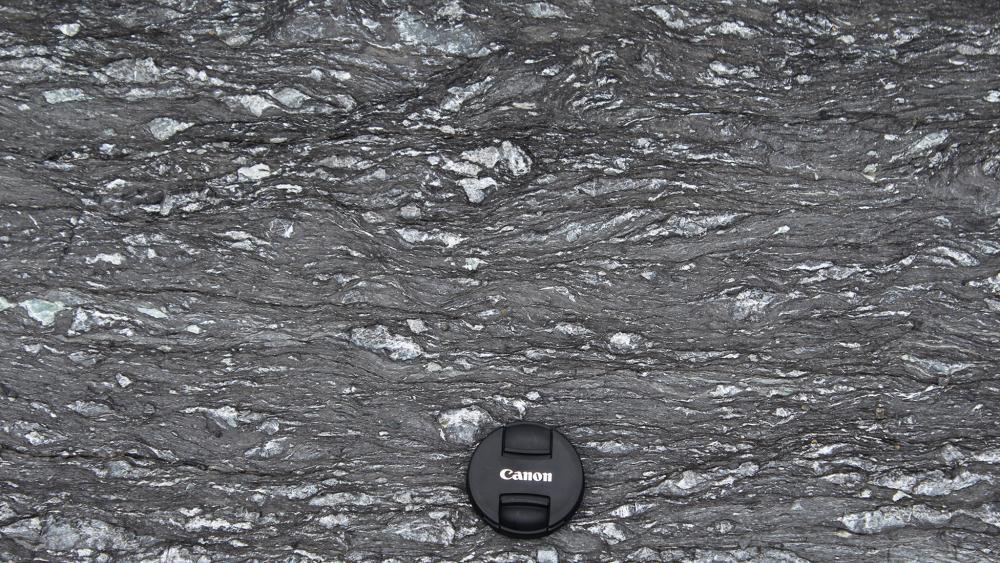UNIVERSITY PARK, PA – According to a research team from Penn State and Brown University, rocks were once buried deep in ancient subduction zones – where tectonic plates collide – giving scientists new clues about how these zones behave during the years between major earthquakes. can help in making better predictions.
Researchers report in the journal Science Advances that clues from rock structures in Alaska and Japan allowed scientists to develop a new model to predict pressure solution activity in subduction zones. Sedimentary rocks consist of particles surrounded by pores containing water. When rocks are squeezed together under extreme pressure, the particles dissolve in water present in the pores at their boundaries, creating a pressurized solution. This allows rocks to deform or change shape, affecting the way tectonic plates slide past each other.
“It’s like when you go ice skating – the blade on the surface melts the ice, which allows you to slide,” said corresponding author Donald Fisher, professor of geology at Penn State. “In rocks, what happens is that quartz particles dissolve at stressed contacts and the dissolved material moves into cracks where it precipitates.”
The world’s most powerful earthquakes occur in subduction zones, where one tectonic plate slides beneath another. When these plates stick together, tension is created in the Earth’s crust – like a rubber band being stretched. When the stress on the plates increases enough to overcome the friction that binds them together – like a rubber band snaps – an earthquake occurs.
“We have shown that pressure resolution is a fundamental process during interseismic periods in subduction zones,” Fischer said. “The occurrence of this pressure solution can actually affect the amount of elastic strain that accumulates in different parts of the seismic zone.”
Fisher said pressure resolution is difficult to detect in the laboratory because it typically occurs very slowly, over thousands to millions of years. Higher temperatures are required to speed up the process in the laboratory, which produces other changes in the rocks that affect the experiments.
Instead scientists turned to rocks that once experienced these tectonic stresses and were later brought to the surface by geological processes. The scientists said rocks showing microscopic shear – or breaking due to stress – have textures that provide evidence for pressure solution.
“This work allows us to test the flow law, or model, that describes the rate of pressure solution in ancient rocks that were once down at the plate boundary and were ejected to the surface,” Fischer said. “And we can apply this to the active margin that is growing today.”
A previous study by another team of scientists linked the stress applied to the rocks and the rate of strain – or how much they deformed. In the new work, Fischer and his colleague, Brown University professor Greg Hirth, created a more detailed model that considers factors such as the rocks’ grain size and solubility, or how much of the rock material can dissolve in liquid.
“We were able to parameterize solubility as a function of temperature and pressure in a practical way, which had not been done before,” Fischer said. “So now we can add up the numbers – different grain sizes, different temperatures, different pressures and get strain rates from that.”
The results could help reveal where in the seismogenic layer – the depth range at which most earthquakes occur – stress is occurring.
The researchers applied their model to the Cascadia Subduction Zone, an active fault that runs from Northern California to Canada and major cities such as Portland, Oregon, Seattle and Vancouver, British Columbia.
The scientists said the temperature and amount of stress built up along the plate boundary have been well studied, and the results of their model match crustal movements based on satellite observations.
“Cascadia is a great example because it’s late in the interseismic period — it’s been 300 years since the last major earthquake,” Fischer said. “We could experience one in our lifetime, which would be North America’s largest natural disaster in terms of the potential for shaking and resulting tsunami.”
The National Science Foundation supported this work.

